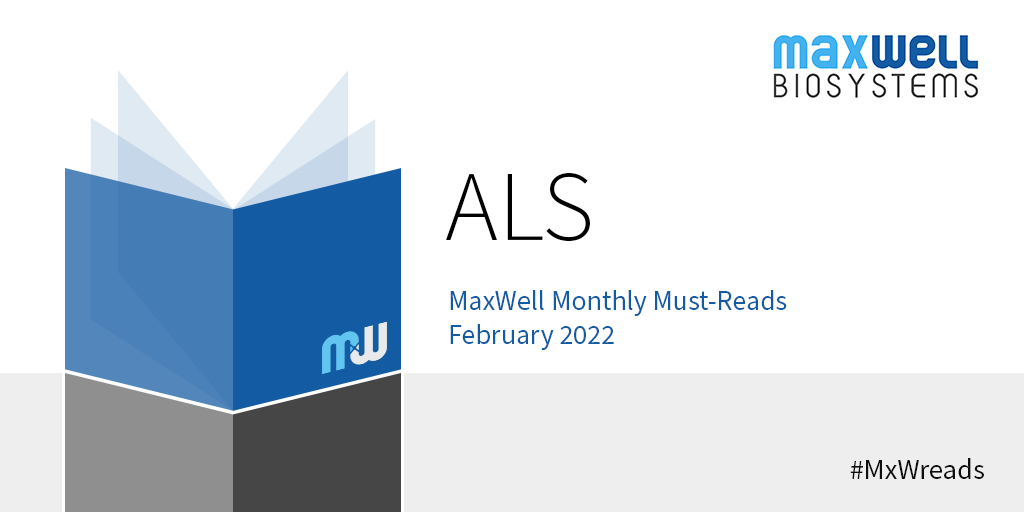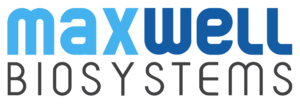

Welcome to our MaxWell Monthly Must-Reads blog for February 2022. After last months edition about retinal organoids we have arrived at the second blog. We have picked another theme this month and selected five papers that we have read including publications using our MaxOne and MaxTwo system. In February, we have decided to focus on ALS research.
The deliberating neurodegenerative disease that forced the “The Iron Horse” (-Lou Gehrig, one of the most decorated baseball legends) to retire is medically known as amyotrophic lateral sclerosis (ALS). Despite the resources and dedication poured into ALS research over the decades, it is still lethal today. In recent years, there is a growing trend to model ALS in vitro, particularly with the human induced pluripotent stem cell (hiPSC) technology. Using ALS-patient derived motor neurons, Huang and colleagues (2021) targeted the motor neuron hyperexcitability, a key cellular phenotypic feature of ALS. Here, they showcased their pipeline combining calcium imaging, microelectrode array and patch clamp recordings to screen as well as validate drug targets that curb motor neuron hyperexcitability. As a proof of principle, their approach identified two known modulators (AMPA receptors and Kv7.2/3 ion channels) in addition to the undiscovered D2 receptors.
Human amyotrophic lateral sclerosis excitability phenotype screen: Target discovery and validation.
by X. Huang, K. C. D. Roet, L. Zhang, A. Brault, A. P. Berg, A. B. Jefferson, J. Klug-McLeod, K. L. Leach, F. Vincent, H. Yang, A. J. Coyle, L. H. Jones, D. Frost, O. Wiskow, K. Chen, R. Maeda, A. Grantham, M. K. Dornon, J. R. Klim, M. T. Siekmann, D. Zhao, S. Lee, K. Eggan, C. J. Woolf,, Cell Rep. 35. June 2021.
Read the paper here.
We decided to also highlight four additional papers to delve into the in vitro modeling of ALS and the application of microelectrode array technologies for their functional characterisation:
- Human stem cell models of neurodegeneration: From basic science of amyotrophic lateral sclerosis to clinical translation.
by E. Giacomelli, B. F. Vahsen, E. L. Calder, Y. Xu, J. Scaber, E. Gray, R. Dafinca, K. Talbot, L. Studer, Cell Stem Cell. 29. January 2022.
A thorough recent review of hiPSC models of ALS. Read the paper here. - Electrophysiological Phenotype Characterization of Human iPSC-Derived Neuronal Cell Lines by Means of High-Density Microelectrode Arrays.
by S. Ronchi, A. P. Buccino, G. Prack, S. S. Kumar, M. Schröter, M. Fiscella, A. Hierlemann,. Adv Biol (Weinh). 5 January 2021.
The characterization of hiPSC ALS cultures with MaxWell HD-MEA systems. Read the paper here. - Human ALS/FTD brain organoid slice cultures display distinct early astrocyte and targetable neuronal pathology.
by K. Szebényi, L. M. D. Wenger, Y. Sun, A. W. E. Dunn, C. A. Limegrover, G. M. Gibbons, E. Conci, O. Paulsen, S. B. Mierau, G. Balmus, A. Lakatos,.
Nat Neurosci. 24 . October 2021.
Characterization of hiPSC organoid model of ALS at the transcriptional, molecular, and functional levels. Read the paper here. - UBQLN2-HSP70 axis reduces poly-Gly-Ala aggregates and alleviates behavioral defects in the C9ORF72 animal model.
by K. Zhang, A. Wang, K. Zhong, S. Qi, C. Wei, X. Shu, W.-Y. Tu, W. Xu, C. Xia, Y. Xiao, A. Chen, L. Bai, J. Zhang, B. Luo, W. Wang, C. Shen, Front. Neuron. 109. June 2021.
A recent publication on a potential drug candidate that alleviates ALS related defects both in vitro and in vivo. Read the paper here.
 English
English


